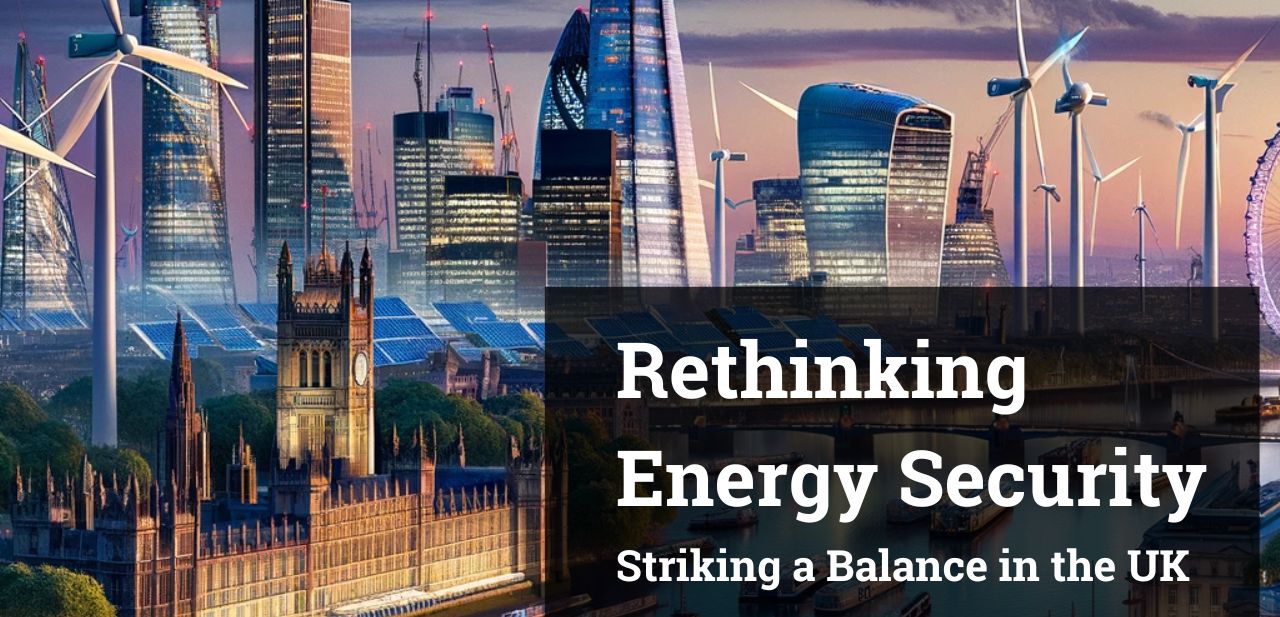
Rethinking Energy Security: Striking a Balance in the UK
Rethinking Energy Security: Striking a Balance in the UK
On Friday 17th November, the UK Government is holding the Westminster Energy, Environment & Transport Forum policy conference, where they will be discussing, amongst other things, energy security.
It is somewhat ironic that experts are coming together to discuss energy security when the UK has just recorded the highest imports for Q2 ever. Despite continuous efforts to expand renewable energy capacity, electricity generation from wind and solar sources in the last quarter fell by 11% compared to the same period last year. It is evident that merely increasing capacity without balancing demand and ensuring flexibility leaves us vulnerable to potential energy crises.
Balancing Generation and Demand
To achieve true energy security, we need to strike the balance between generation and demand. Merely ramping up renewable energy installations without a clear plan to manage fluctuations in supply and demand is a recipe for disaster. While renewables offer a pathway to reduce our dependence on fossil fuels and minimise carbon emissions, we must also consider the intermittent nature of wind and solar power.
The recent data indicates that the existing capacity is not adequately meeting the nation’s energy needs, especially during periods of low wind speeds. Neglecting the demand-side of the equation can lead to a precarious situation where sudden fluctuations in solar or wind availability leave us scrambling for alternatives. With only 1 coal fired station remaining (Ratcliffe, Nottinghamshire Scheduled to close September 2024 removing another 2,000 MW of base load, we’re left with relying on imports. The problem is, weather fluctuations affect more than just the UK, and we could end up trying to import energy from Europe precisely when Europe is looking to keep its own resources.
Solving the Equation
The solution is to put more weight on the demand side of the seesaw, to bring the system back into balance. To avert future energy crises, the UK government must urgently reassess its approach. And it’s essential that adding more renewable capacity is just part of the solution. Energy must be available in the right amount, at the right time, in the right place, and for the right price.
The role of energy storage, therefore, becomes pivotal. By effectively utilising energy storage, we can mitigate the risks associated with the intermittent nature of renewable sources. Energy storage means we can embed flexibility at the grid edge – the very place consumers need it the most. This is not just about ensuring a constant supply of energy; it’s about building a system that can withstand fluctuations and maintain a balance between supply and demand (and that doesn’t rely on imports).
Technology vs Policy
This isn’t just a technological challenge; it’s also a policy issue. As we move forward, it’s vital that energy policies not only encourage the growth of renewable sources but also support the development of technologies that can bridge the gap between supply and demand.
We need a comprehensive energy strategy that encompasses the entire energy ecosystem, including energy storage technologies, demand response mechanisms, and flexible smart grid management solutions. By integrating these elements, we can ensure a more robust, reliable, and balanced energy system.
The Westminster Energy, Environment & Transport Forum policy conference presents an opportunity for the UK government, policymakers, and industry leaders to come together to address the discrepancies between renewable energy capacity and usable output. Solving the renewable energy equation requires a holistic approach that combines increasing renewable energy generation capacity with investments in technologies like energy storage. This will not only aid in achieving the UK’s net zero goals but also ensure energy security for years to come.
